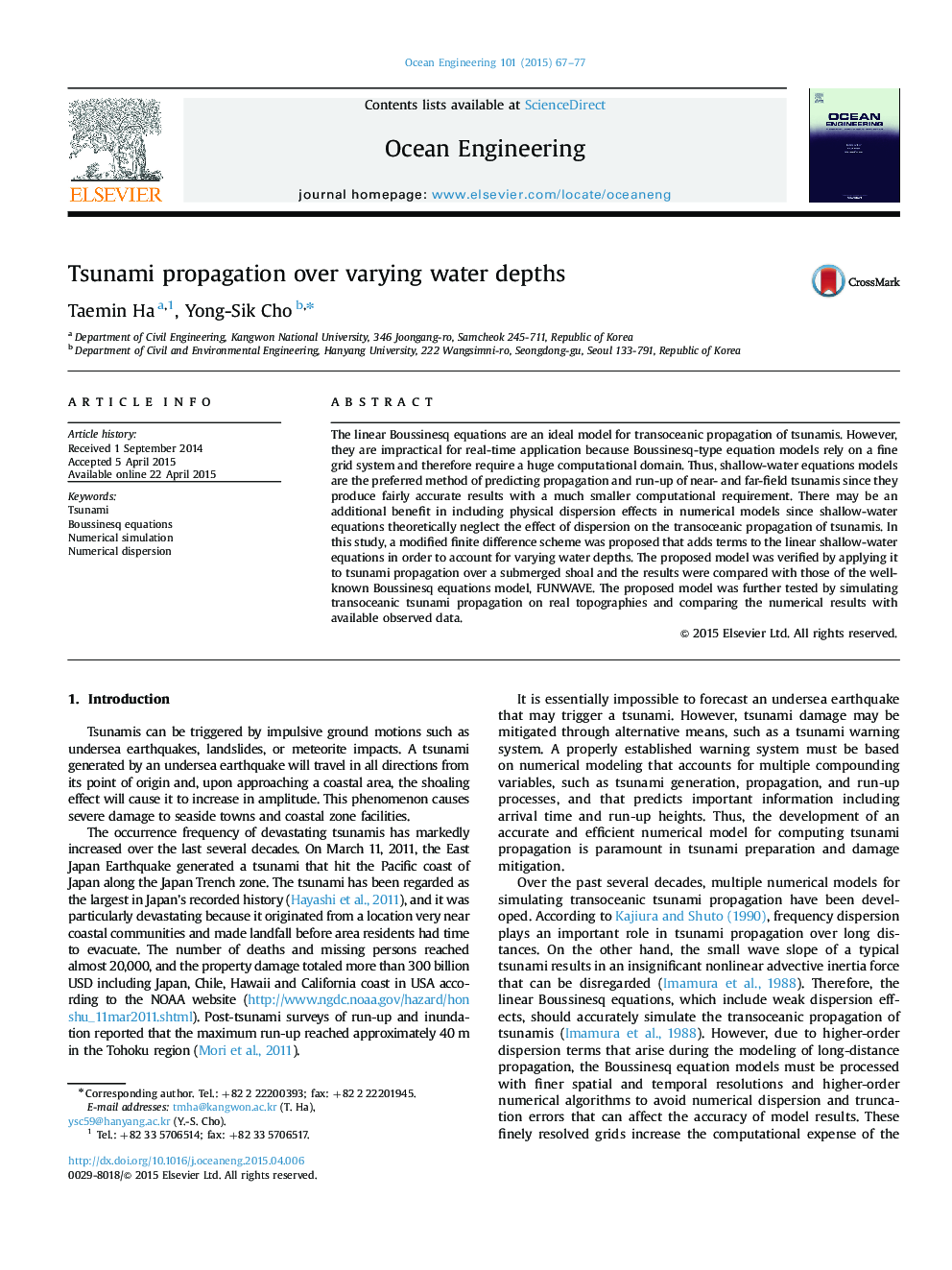| Article ID | Journal | Published Year | Pages | File Type |
|---|---|---|---|---|
| 1725466 | Ocean Engineering | 2015 | 11 Pages |
Abstract
The linear Boussinesq equations are an ideal model for transoceanic propagation of tsunamis. However, they are impractical for real-time application because Boussinesq-type equation models rely on a fine grid system and therefore require a huge computational domain. Thus, shallow-water equations models are the preferred method of predicting propagation and run-up of near- and far-field tsunamis since they produce fairly accurate results with a much smaller computational requirement. There may be an additional benefit in including physical dispersion effects in numerical models since shallow-water equations theoretically neglect the effect of dispersion on the transoceanic propagation of tsunamis. In this study, a modified finite difference scheme was proposed that adds terms to the linear shallow-water equations in order to account for varying water depths. The proposed model was verified by applying it to tsunami propagation over a submerged shoal and the results were compared with those of the well-known Boussinesq equations model, FUNWAVE. The proposed model was further tested by simulating transoceanic tsunami propagation on real topographies and comparing the numerical results with available observed data.
Related Topics
Physical Sciences and Engineering
Engineering
Ocean Engineering
Authors
Taemin Ha, Yong-Sik Cho,
